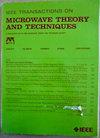A Sub-6 GHz Wideband Transceiver Chipset With Calibration-Friendly Harmonic Rejection RF Front-Ends
IF 4.1
1区 工程技术
Q2 ENGINEERING, ELECTRICAL & ELECTRONIC
IEEE Transactions on Microwave Theory and Techniques
Pub Date : 2025-02-11
DOI:10.1109/TMTT.2025.3535587
引用次数: 0
Abstract
This article presents a transmitter (TX) and receiver (RX) system operating in the 0.1–6 GHz frequency range with multi-protocol compatibility, which integrates local oscillator (LO) harmonic rejection (HR) radio frequency front-ends (RFFE) spanning 0.1–2.5 GHz, with frequency-adaptive calibration capabilities. In the HR-RFFE, programmable RC networks are deployed in both the TX and RX to achieve intermediate frequency (IF) domain HR and pre-calibration. An 8-phase LO signal generation, utilizing a D flip-flop (DFF) based chain, is employed to facilitate HR calibration. To mitigate HR degradation caused by LO phase errors, the TX employs a cross-connected Gilbert phase detector (PD) to assess the orthogonality of 90° shifted LO signals, enabling LO calibration. For the receiver, phase errors are directly calculated via the baseband (BB) output at a much lower frequency. Fabricated in 40-nm CMOS technology, the TX features a core area of 1.2 mm2, a programmable gain range of -12–26 dB, a P1dB compression point of 16.1 dBm, and a system efficiency of 25.9%. The third and fifth harmonic rejection ratios (HRRs) exceed 46.9 and 53.5 dBc, respectively. The receiver, which incorporates an integrated ADPLL, shows a core area of 1.4 mm2, a maximum gain of 68.4 dB, a minimum noise figure of 3.9 dB, and an odd-order HRR exceeding 71 dBc.一种具有校准友好型谐波抑制射频前端的Sub-6 GHz宽带收发器芯片组
本文介绍了一种工作在0.1-6 GHz频率范围内的多协议兼容的发射器(TX)和接收器(RX)系统,该系统集成了0.1-2.5 GHz范围内的本地振荡器(LO)谐波抑制(HR)射频前端(RFFE),具有频率自适应校准功能。在HR- rffe中,可编程RC网络部署在TX和RX中,以实现中频(IF)域HR和预校准。采用基于D触发器(DFF)链的8相LO信号生成,以方便HR校准。为了减轻由LO相位误差引起的HR下降,TX采用了一个交叉连接的Gilbert相位检测器(PD)来评估90°位移LO信号的正交性,从而实现LO校准。对于接收机,相位误差直接通过基带(BB)输出在一个低得多的频率计算。TX采用40纳米CMOS技术制造,核心面积为1.2 mm2,可编程增益范围为-12-26 dB, P1dB压缩点为16.1 dBm,系统效率为25.9%。第三和第五次谐波抑制比(HRRs)分别超过46.9和53.5 dBc。该接收机集成了一个ADPLL,其核心面积为1.4 mm2,最大增益为68.4 dB,最小噪声系数为3.9 dB,奇阶HRR超过71 dBc。
本文章由计算机程序翻译,如有差异,请以英文原文为准。
求助全文
约1分钟内获得全文
求助全文
来源期刊

IEEE Transactions on Microwave Theory and Techniques
工程技术-工程:电子与电气
CiteScore
8.60
自引率
18.60%
发文量
486
审稿时长
6 months
期刊介绍:
The IEEE Transactions on Microwave Theory and Techniques focuses on that part of engineering and theory associated with microwave/millimeter-wave components, devices, circuits, and systems involving the generation, modulation, demodulation, control, transmission, and detection of microwave signals. This includes scientific, technical, and industrial, activities. Microwave theory and techniques relates to electromagnetic waves usually in the frequency region between a few MHz and a THz; other spectral regions and wave types are included within the scope of the Society whenever basic microwave theory and techniques can yield useful results. Generally, this occurs in the theory of wave propagation in structures with dimensions comparable to a wavelength, and in the related techniques for analysis and design.
 求助内容:
求助内容: 应助结果提醒方式:
应助结果提醒方式:


